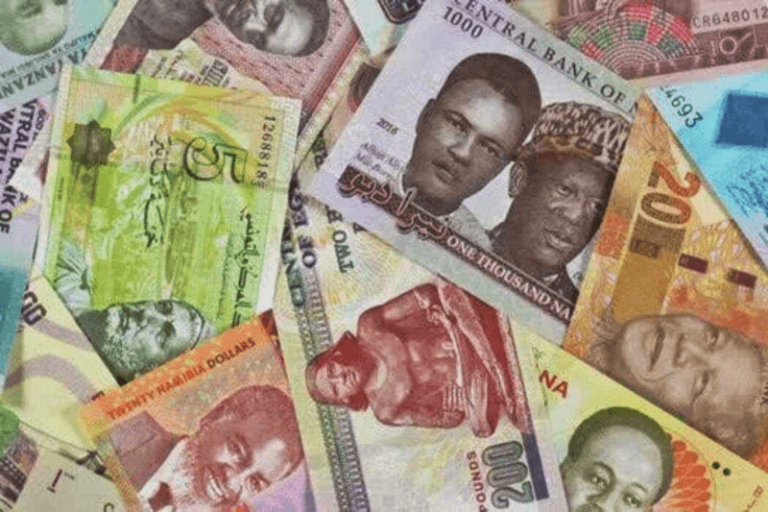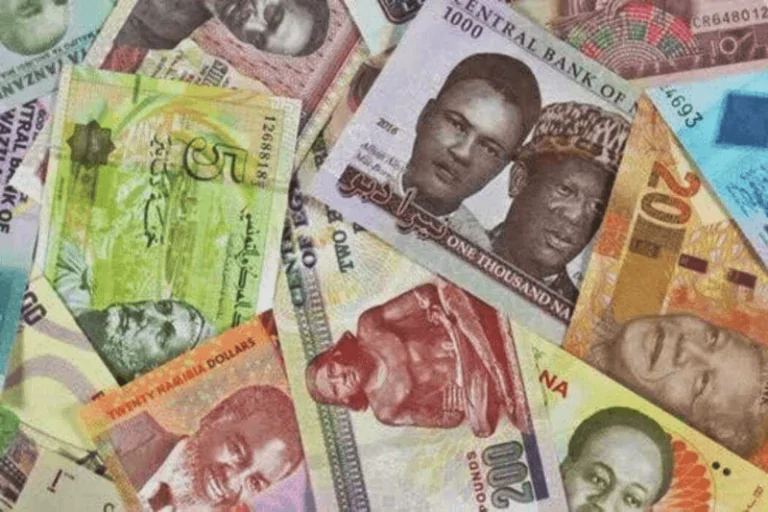

image 800x533 (3)
Many African countries have been able to retain the value of their currencies in the face of multiple economic challenges including inflation, political changes, and the dynamics of foreign markets. Strong currencies reflect fiscal policy, historical background, economic stability, and—often in many cases—strict regulatory systems. Examining the elements allowing the top 10 strongest currencies in Africa to be robust under various economic environments offers a whole picture of them.
Among the first currencies used in Africa, the Egyptian Pound (EGP) is rich in tradition extending back to 1834. Originally supposed to replace the piastre, the EGP first connected with the British pound and the US dollar. Egypt changed significantly in 2016 when it opted to apply a floating exchange rate system to get money from the International Monetary Fund (IMF) and manage long-standing economic problems.
Aiming to sustain the currency among many tourism receipts, trade imbalances, and regional turbulence, the Central Bank of Egypt has issued the EGP under careful control since its founding in 1961. With 1 GBP at roughly 62.77 EGP right now, the exchange rate shows Egypt’s continuous strategy of juggling efficient money control with economic growth.
Originally introduced in 1967 to replace the Zambian pound after the nation’s freedom from Britain, the Zambian Kwacha (ZMW) is named for the Nyanja word for “dawn,” thereby symbolizing a new beginning for Zambia. Tightly controlling the currency, the Bank of Zambia has kept tremendous stability despite major economic difficulties—especially the volatility of copper prices—based on which Zambia largely exports.
Value of the Kwacha is much influenced by national export performance as well as world copper demand. Currently trading at roughly 34.38 ZMW, 1 GBP shows Zambia’s prudent use of diversified assets and sensible fiscal policies meant to support development and stability in order to withstand economic pressures.
Originally substituting the South African pound, the Rand (ZAR) first became used in 1961 and is presently among the most traded currencies in Africa. The name comes from the “Witwatersrand” ridge, famous for its mineral concentration—especially in gold. Supported in a diverse economy including mining, industry, and tourism, the Rand is under control by the South African Reserve Bank.
The ZAR has shown durability despite recent oscillations driven on by changes in world commodity prices and many economic reforms including land redistribution programs. With 1 GBP equal to about 22.9 ZAR right now, Rand is clearly still rather important in African financial markets and in international trade.
Named for the Akan word “cowry shell”, a typical depiction of riches, the Ghanaian Cedi (GHS) Originally adopted following Ghana’s independence, the Cedi replaced the British pound and has exhibited amazing constancy in spite of inflationary pressures. Ghana’s economic policies designed to strike a balance between development and financial stability help one to better appreciate its resilience.
The main natural resources of Ghana—gold, oil, and cocoa—help to raise the Cedi’s value. One GBP at roughly 20.87 GHS reveals the government’s will to maintain economic stability while handling inflationary pressures and responding to world economic developments.
Officially used in Eritrea, the Eritrean Nakfa (ERN) was adopted in 1997 in replacement for the Ethiopian birr. Named for Nakfa, a site vital to Eritrea’s struggle for independence, the currency has a fixed value: 1 GBP = around 19 ERN. Eritrea changed its banknotes in 2016 using fresh designs made by artist Clarence Holbert in order to fight counterfeiting.
By virtue of strict regulatory control and limited foreign exchange supply, Eritrea’s well managed banking sector reduces currency volatility. With this degree of control, the Nakfa is among the most powerful currencies in Africa as it has stayed consistent despite trade links limited and economic restraints.
Originally issued during the years of British colonial control, the Seychellois Rupee (SCR) has been the official currency of Seychelles since 1914. Mostly because of sound economic policies and the vibrant tourist business of the island nation, the Rupee has shown amazing consistency under the central bank of Seychelles administration since 1979.
With a value of about 1 GBP to 17.12 SCR, the Seychellois Rupee gains from regular foreign money flow—especially from European visitors. Strategic economic projects by Seychelles have helped the nation to maintain its currency value even in the face of worldwide travel disruptions caused by catastrophes like the COVID-19 virus.
Originally replacing the South African Rand, the Botswana Pula (BWP) first emerged in 1976 and has developed to be one of the most stable currencies used in Africa. Translating “Pula” as “blessing,” or “rain,” the phrase reflects the historic importance of water in Botswana, where little rainfall is a hallmark. Originally under control of the Bank of Botswana running under a peg to the US dollar, today the Pula has a managed float system.
The Pula’s stability can be explained in part by Botswana’s conservative policies, which greatly help to support its economy from diamond exports. Now about 17.36 BWP, one GBP shows Botswana’s dedication to wise financial management and strong economic growth.
Official currency of Morocco is Moroccan Dirham (MAD), among the most stable currencies in the area. Made originally in 1960 in place of the Moroccan franc, Bank Al-Maghrib oversees the Dirham. Morocco has a diverse economy; tourism and industry mostly help to keep the Dirham steady.
One GBP shows about 12.69 MAD right now the success of Morocco’s strict laws and controlled currency system. These elements have kept the Dirham valuable among changes in the state of the world economy, so foreign investors make a prudent choice.
Originally adopted in 1971, the Libyan Dinar (LYD) is the national currency of Libya; initially used following the country’s independence in 1951, Libya concurrently relied on many currencies, most notably the Algerian franc and the Egyptian pound. With 1 GBP equal to about 6.2 LYD, Libya’s central bank’s establishment was absolutely critical in stabilizing the Dinar, which has since become among Africa’s strongest currencies.
Libya’s oil-rich economy has greatly boosted the Dinar despite political unrest, therefore guaranteeing its strength in respect to other currencies used around the continent. Key in Africa’s economic scene, the rigorous central bank control helps to justify the Dinar’s great value.
The Tunisian Dinar (TND) is the national currency of Tunisia; initially adopted in 1958 following Tunisia’s independence from France; it ranks among African currencies. The Dinar replaces the Tunisian franc benefiting from a well-developed legislative framework under direction of the Banque Centrale de Tunisie.
One GBP currently roughly represents the Dinar’s strength and Tunisia’s deliberate approach to economic development at about 4.1 TND. The Dinar’s consistent value has resulted from the country’s continuous attempts to lower inflation, boost foreign investment, and maintain strong tourism income, thereby building it as a basis of economic stability in the region.
Apart from stressing the particular strategies of any country toward economic resilience, these currencies also reflect several historical and economic surroundings. From the Tunisian Dinar to the Egyptian Pound, Africa’s strongest currencies show a dedication to stability and give fascinating prospects for foreign investors and visitors both.
Two mobile telecom leaders, MTN Group and Airtel Africa, joined forces to create a new digital infrastructure system throughout African…
South African President Cyril Ramaphosa defended his nation against claims of white discrimination made by tech magnate Elon Musk. After…
Hilton launched Signia by Hilton for its first appearance in Egypt and Africa through its hotel expansions. These hotels at…
UNICEF reported that, nearly 2900 people died of cholera across Eastern and Southern African countries while children suffer most greatly…
Enza, based in the United Arab Emirates, obtained $6.75 million in initial investment funding from Algebra Ventures and Quona Capital.…
US Secretary of State Marco Rubio ordered South African Ambassador Ebrahim Rasool to leave America by March 21 because he…
This website uses cookies.